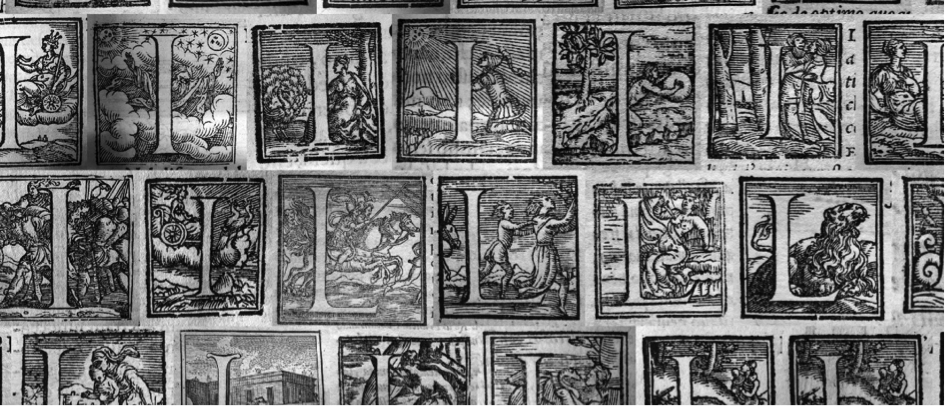By Joanna Rozendaal
Last year, some new developments in book historical research caught the eye of many. Fragments of texts, ornamental initials and images in early modern books were made freely available on a website on typography. Normally, book history is a relatively little known research field, but more than a million visitors saw or used some of the 50.000 images presented on the Flickr website (to become: Typograaf).
Initiator Paul Dijstelberge ascribes this success mostly to the interest of outsiders: graphic designers and even tattoo artists notice and use the sometimes stunningly beautiful letter designs. However true this may be, the foundation that made the interest of outsiders possible in the first place, is it’s open character. Whoever is interested may look at, download, and reuse the images for various purposes.
Having experienced the restraint (luckily not at first hand) with which some scholars share their sources, this approach is refreshingly collegial. It is not hard to imagine why some people guard their raw material. It can, for example, take years to compose a sufficiently extensive collection of data. If others are able to use these data freely, they might highjack the material, not giving credits to the original collector; or conduct the research the collector eventually wanted to carry out himself.
These disadvantages may be, but hoarding data and keeping them to oneself hinders the accumulation of knowledge; which is what science (in the broadest sense of the word) is all about. Furthermore, the possible disadvantages are outweighed by the gains. To make available all the sources gathered by a single researcher over a long period of time, would certainly aid other researchers interested in the same set of data, who wouldn’t have to repeat the time-consuming data collecting. As is clear from the example mentioned above, a highly specialized dataset can and probably will attract the interest of unexpected groups of people, be it tattoo artists or scholars from different research fields, such as art historians.
Luckily, this project is not the only example of what I hope shall turn out to be an ever-growing trend among scholars. It is not even one of few. Perhaps the most famous example is the Rijksmuseum, which has released all of its images to use freely, the Emblem Project Utrecht and, of course, Europeana. These are only a few examples of the developments taking place in the world of sharing data in the Humanities.
Most of these initiatives however are larger, funded projects, disclosing texts or images from institutes such as libraries and museums. There is a wealth of information still hidden on the computers of individual researchers. An interesting project to allow individual researchers (and all others interested) to store large sets of data and to make them public is Metabotnik, where one can create ‘huge zoomable images’, built up from any amount of smaller images. I believe this initiative is an important step in allowing individuals to publicize their resources, making them available for other interested parties.
However laudable this initiative may be, improvements can certainly be made in order to enable the use of these data for other research. As of yet, the individual images created here are not tagged, which makes it difficult to identify them, and it is not possible to order them in different manners. Moreover, only images can be added, not computer readable or searchable texts. Luckily some of these limitations will be lifted, as Metabotnik is still in Beta at the moment, and a number of functions –including the possibilities of tagging – will be made available a few months from now.
Even now however, Metabotnik gives users a platform to show individual data in one large image, making visible possible developments in style, use of colour; any visible aspect of the image. What the user sees and how these data are ordered is restricted by the uploader. If only there would be such a site, on which individual researchers could save all kinds of data; make them available, searchable and let the user arrange them in any likely way, research possibilities could really take off.
https://www.flickr.com/photos/bookhistorian/
https://metabotnik.com/
(new edits 9.1.2015)

